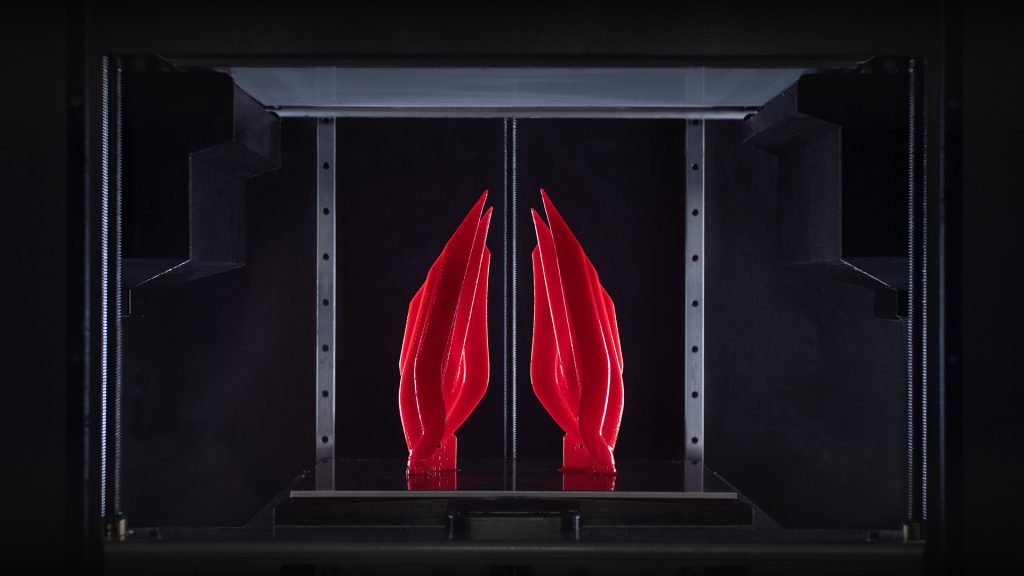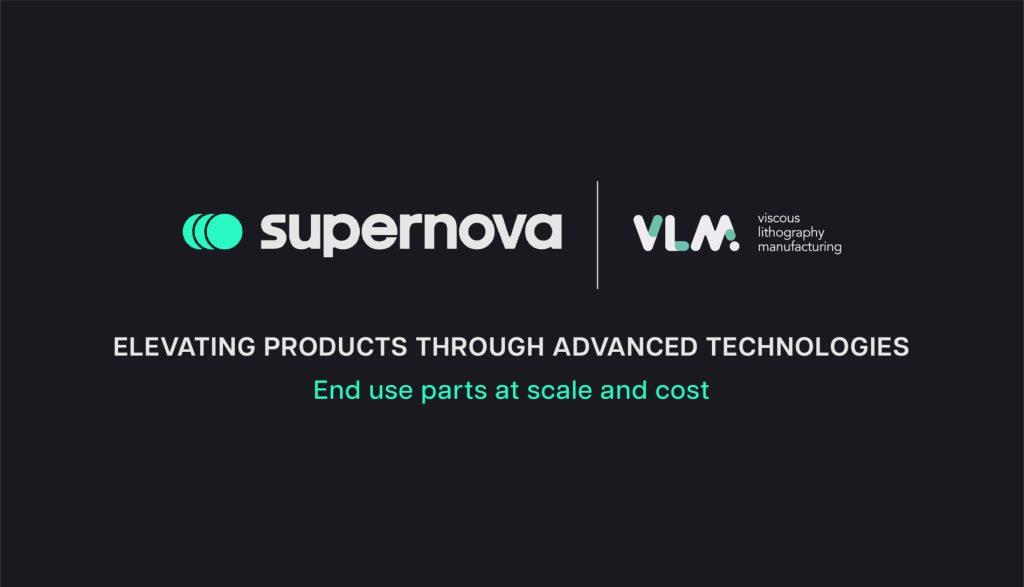Spanish 3D printer manufacturer BCN3D has announced the launch of Supernova, a carve out of its Viscous Lithography Manufacturing (VLM) business unit.
Headquartered between Austin and Barcelona, Supernova seeks to unlock new end-use, high-volume applications. The company hopes to achieve this by combining high-performance materials, a scalable production platform, and competitive cost per part based on VLM technology and high-viscosity materials.
Over 500 companies have already registered to the VLM Technology Adoption Program. Supernova will also inherit existing VLM customers, including Puma, Saint-Gobain, Orbea, Hutchinson, and Prodrive.
Notably, Supernova is not a subsidiary of BCN3D. Instead, the two companies are completely independent of each other following the carve out, which was completed in Q4 2023.
Supernova will be led by Roger Antunez as CEO, who previously served as General Manager of BCN3D since 2019. Marta Mico, formerly the VLM Head of Business Development at BCN, joins as Co-Founder. The new company has also announced that it will expand its R&D teams in both its material and products segments, as well as in its business departments.
Looking to the future, Supernova will focus on material developments targeting high-volume end-use applications, as well as the industrialization of its product ecosystem. The company’s first beta VLM systems are set to be installed by the end of the year.
VLM high-viscosity 3D printing
Launched by BCN3D back in March 2022, VLM technology marked the company’s debut into the resin 3D printing market. The lithography based process laminates layers of resin onto a transparent transfer film, before the resin is photopolymerized into the 3D printed object .
One of the main selling points of this technology is its ability to 3D print high-viscosity resins, up to 100 times more viscous than those used in conventional DLP, SLA, or MSLA processes.
This reportedly allows for the production of high-strength parts, possessing up to triple the impact resistance and double the tear strength. What’s more, with increased safety restrictions against conventional epoxy resins potentially on the horizon, more manufacturers could look towards the viscous resins processed by VLM.
VLM technology also enables dual-material 3D printing, allowing users to combine two different resins into a single build.

Supernova to industrialize VLM product ecosystem
To support its long-term material strategy, Supernova has formed relationships with major additive manufacturing chemical companies. This includes a Joint Development Agreement (JDA) with Arkema, and other partnerships with Altana, Elkem, Henkel, and Rahn.
According to Supernova, the unique properties offered by VLM allow the technology to 3D print parts closer to those of injection-molded plastics than 3D printing resins. As such, the company claims to unlock “real production applications,” offering a technology that combines quality, productivity, and a competitive cost per part.
Since its launch, over 500 companies have signed up to BCN3D’s VLM Technology Adoption Program. These companies span a number of industries, including automotive, aerospace, manufacturing, consumer goods, footwear, audiology, healthcare, and defense.
Indeed, motorsport firm Prodrive was one of the first companies to leverage VLM, using the technology to 3D print end-use parts integrated directly into its cross country cars. The material’s durability was said to be a key driver of its success at Prodrive.
“VLM allows us to continue to use the engineering materials that we know and love, but instead in significantly finer resolution in all three directions, and the material is much more homogeneous, making the finished parts behave much more like a traditional injection molded part,” stated Callum Harper, Design Engineer at Prodrive.
Elsewhere, automotive glass manufacturer Saint-Gobain has used VLM to 3D print 7000 positioning fixtures at €0.79 per part in just seven days.
Over the next year, Supernova plans to leverage the Technology Adoption Program to develop new applications in key vertical markets. Through this initiative, the company hopes to influence both materials development and the industrialization of hardware systems to form what it is calling a “production ready ecosystem.”

Developments in industrial-scale resin 3D printing
Supernova is the latest company to promote its resin 3D printing technology towards industrial-scale applications.
At Formnext 2023, 3D printer manufacturer Raise3D introduced its DF2 solution. This marks the newest addition to its industrial 3D printing portfolio, and the company’s first resin-based system. The resing 3D printing solution includes the DF2 3D printer, DF Wash for automated cleaning, DF Cure for advanced curing, specialized resins, and ideaMaker slicing software.
This new offering boasts rapid 3D printing speeds, refined surfaces, and high precision. The integration of streamlined resin management features, such as Auto Resin Refill and Resin Material Auto recognition, enhances DF2 Solutions’ operational efficiency, boosting productivity.
Elsewhere, 20 Liquid Crystal Magna LCD 3D printers from Photocentric were leveraged last year to meet the ‘the largest ever 3D printed parts order.’ Delivered by Utah-based 3D printed parts manufacturer Merit3D, this order saw Florida-based adhesives manufacturer Adhesive Technology Corporation request over 1 million end-use 3D printed parts in May 2023.
The parts in question were hangers for epoxy products, used to attach the mixing nozzle to the epoxy tube. These components were delivered at a rate of 40,000 3D printed pieces per week. In one batch, 400 parts were successfully 3D printed in a single 3D print run of 225 minutes on each Photocentric system.
Subscribe to the 3D Printing Industry newsletter to keep up to date with the latest 3D printing news. You can also follow us on Twitter, like our Facebook page, and subscribe to the 3D Printing Industry Youtube channel to access more exclusive content.
Are you interested in working in the additive manufacturing industry? Visit 3D Printing Jobs to view a selection of available roles and kickstart your career.
Featured image shows the Supernova logo and launch banner. Image via Supernova.


